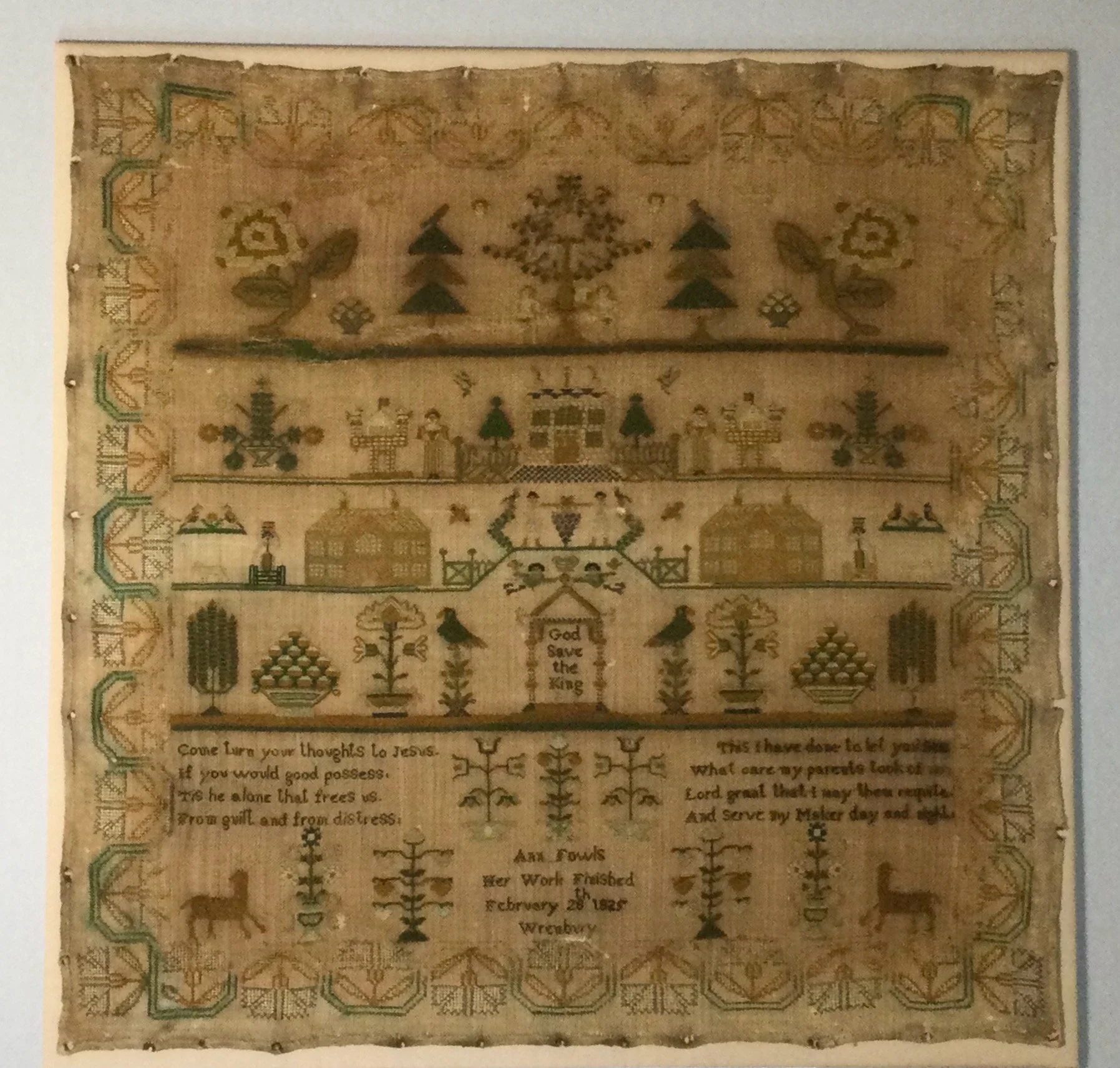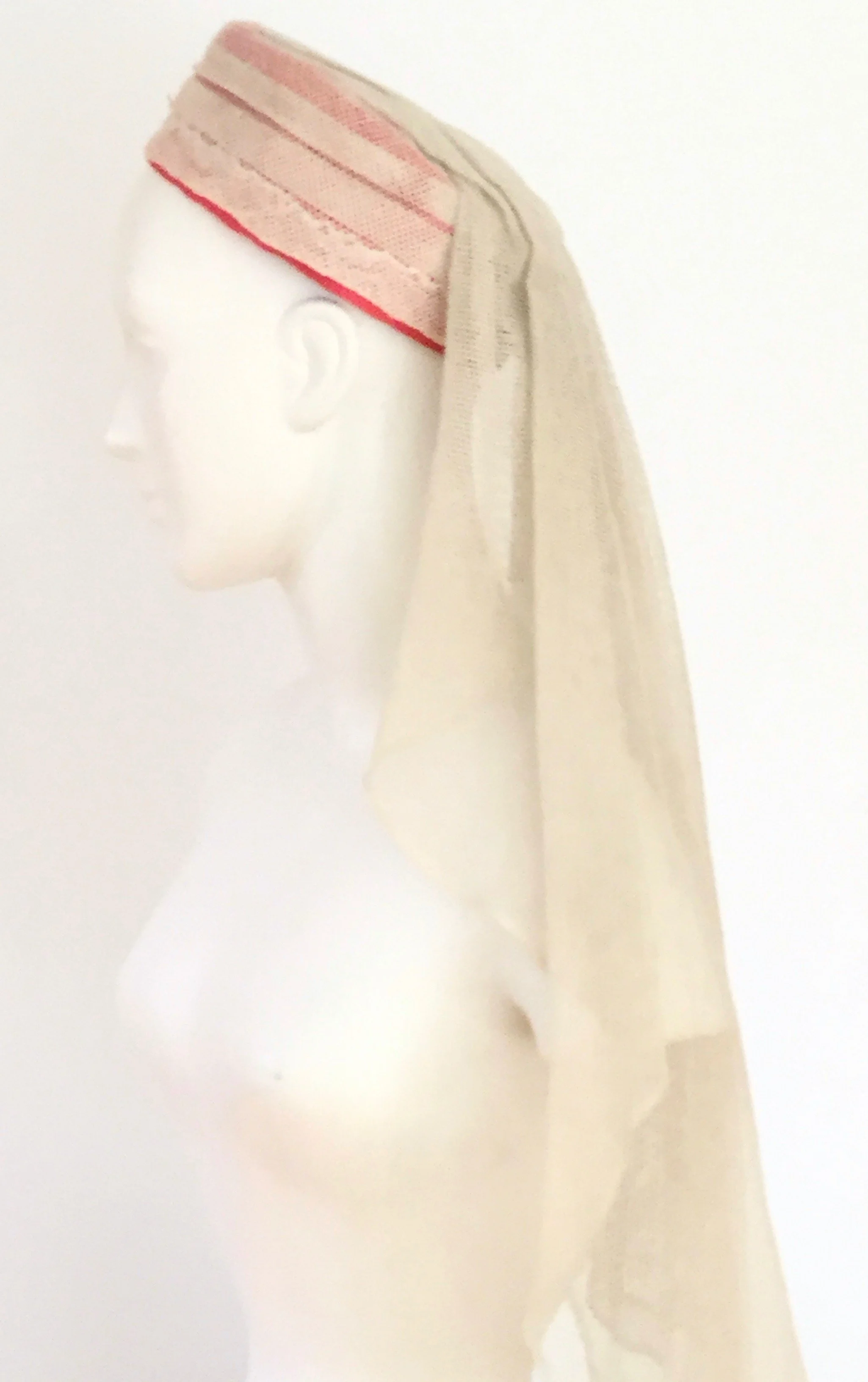
Conservation Projects
Rohmer French Fashion Doll’s Dress of the 1850s
See more about this conservation project below.
My conservation work and choice of treatment incorporates
current practices, appropriate materials and scientific analysis. Culture and tradition are factors in the construction of a textile and costume, and, as such demand and receive the respect in the treatment process.
Grecian Pageantry Costume Conservation Prepared for the New American Wing at the MFA, Boston
The two-piece ensemble had extensive damage due to infestation and poor storage conditions. The underdress panels needed complete relining to stabilize the garment and properly support it for installation into the gallery.
The final presentation was beautiful. The treatment added new life to the drape of the garment, and prolonged the life of a rare costume from the early 1900s.
Woman's Grecian pageant costume
American, about 1900
Wool plain weave stenciled with metallic pigments
Center back (overdress) 51 1/2 in. (130.8 cm)
Museum of Fine Arts, Boston
Gift of Mrs. Edward L. Stone
2000.970.1-2
Photograph © Museum of Fine Arts, Boston

-
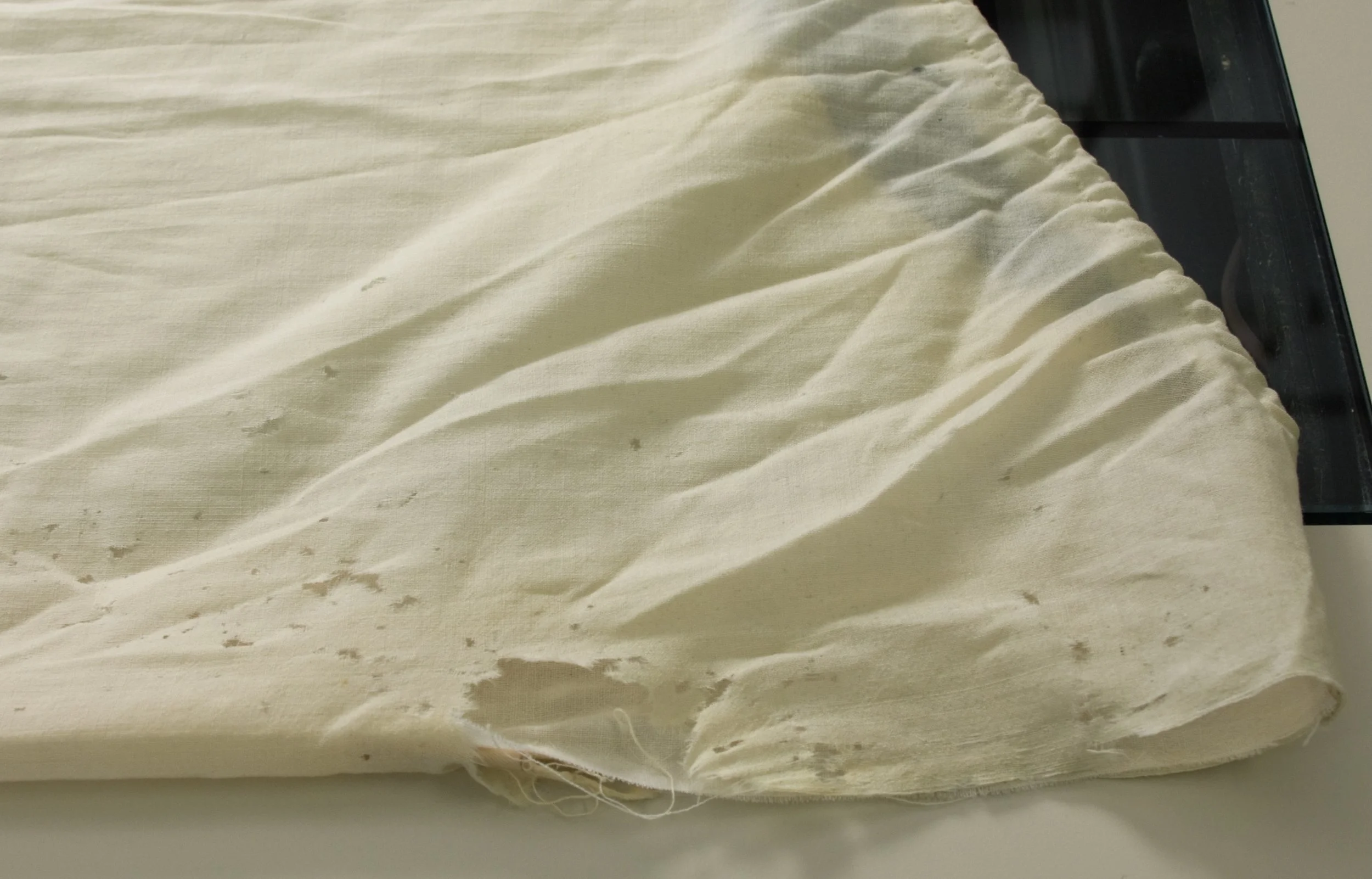
Before Treatment
This before treatment photograph of the right underarm area illustrates the extensive damage caused by infestation. This is only one example of the type of damage visible throughout the underdress.
-
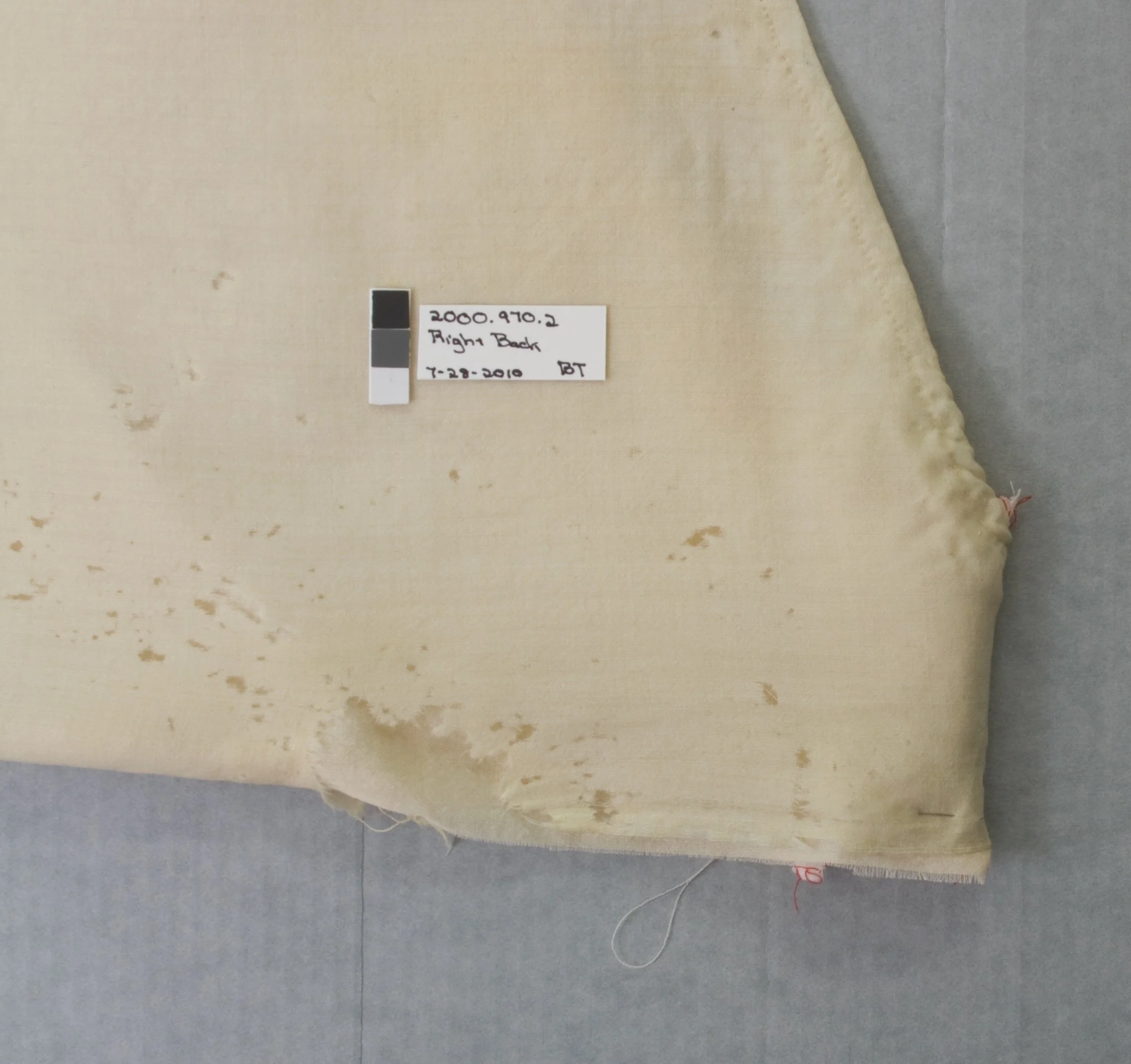
During Treatment
Choosing the perfect lining fabric was critical. It not only added color compensation beneath the holes, but critical overall support; allowing the garment to drape in the manner of the original wool. Contact humidification was used to flatten the original fabric before lining. Stitch stabilization was used to combine the panels with laid and couching stitches to stabilize the holes.
-

After Treatment
As the photo shows, the underarm is stabilized, and brought back to its original beauty and design.
1850s Doll’s Dress
This is only one of the dresses that came with this Rohmer’s Fashion Doll of the 1850s. This dress represents the fashion of the day, in the antebellum style of the period. It was constructed of woven plaid silk taffeta with pink horizontal and vertical stripes.

-
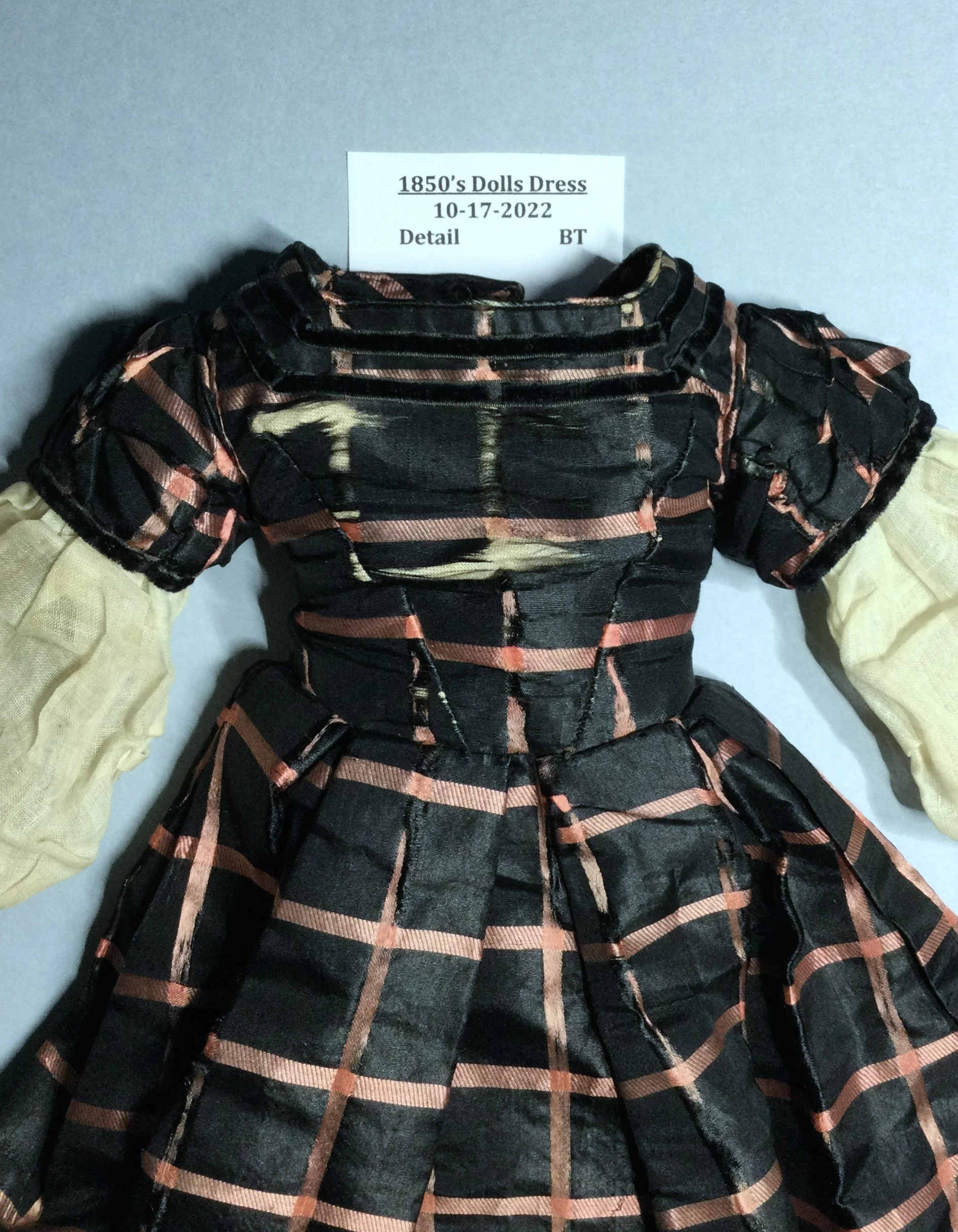
Before Treatment
The visible slits within the creases and areas of stress are examples of chemical degradation most likely caused by iron oxide which was used as a mordant to create the black dye.
-
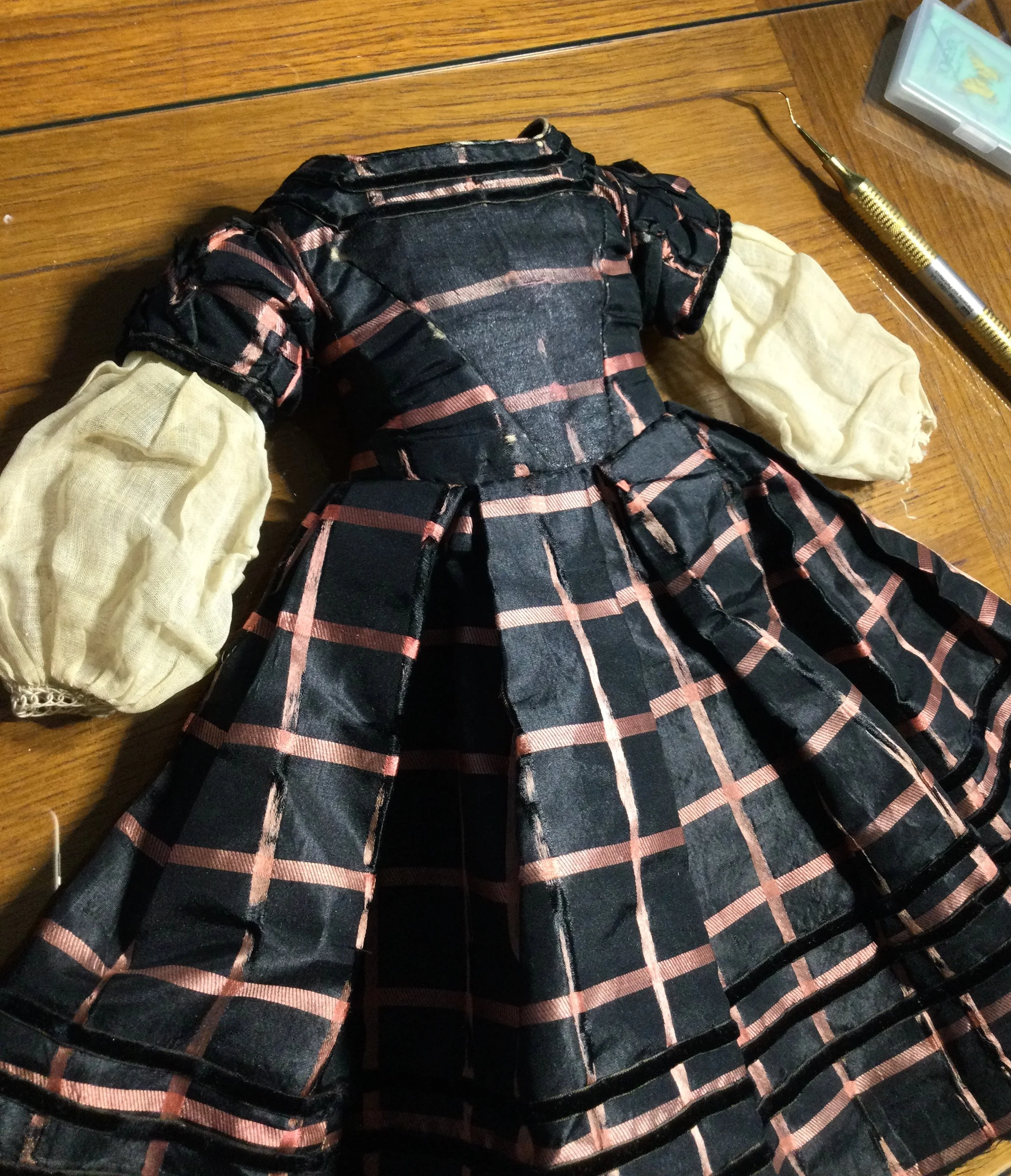
During Treatment
An adhesive repair stabilized and supported the damage. The ultimate goal was to treat the costume without removing the fine original stitching.
-

After Treatment
This doll’s dress will always be fragile but treatment allows its wearer to again be dressed in three-dimensional beauty.
Needlework
Ann Fowles 1825, Wrenbury England
Samplers, embroideries, needlework and woven wall hangings have a domestic warmth and intimacy that makes them treasured by both museum and private collectors. This English sampler was discovered and purchased in 2022 by the current owners. Because of degradation and soiling, it needed treatment to allow it to again be displayed and enjoyed.

-

Before Treatment
The sampler was soiled, stained with areas of both slits and loss. It had been mounted with acidic materials, which over time caused overall discoloration.
-
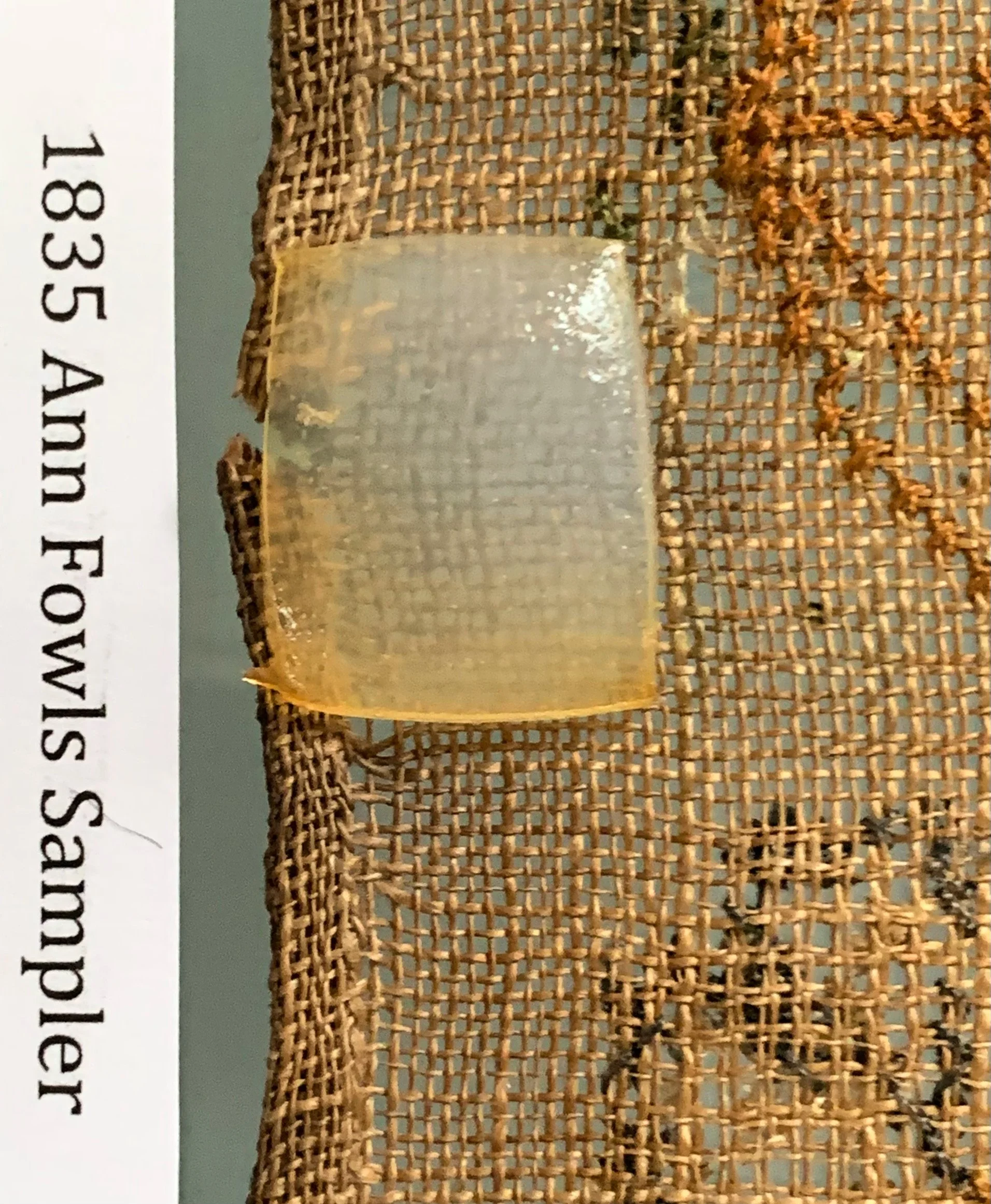
During Treatment
This is an example of an area being treated by a gel used as a poultice to reduce staining. The blue green embroidery yarn believed to be indigo carmine proved to be fugitive, making it impossible to do an overall wet-cleaning.
-

After Treatment
Treatment included custom underlays where loss existed, stain removal, and final mounting using acid-free materials. The sampler was brought back to life by the conservator with the support of the owners, who understood both its history and beauty.
Quaker Straw Bonnet from the 1850s
This Quaker Bonnet was included in the exhibition “Fashioning America: Grit to Glamour,” organized by Crystal Bridges Museum of American Art. It traveled with the exhibition which later opened at the New Orleans Museum of Art.

-

Before Treatment
The back section of the bonnet was misaligned with one area of loss located at the left back side section.
-
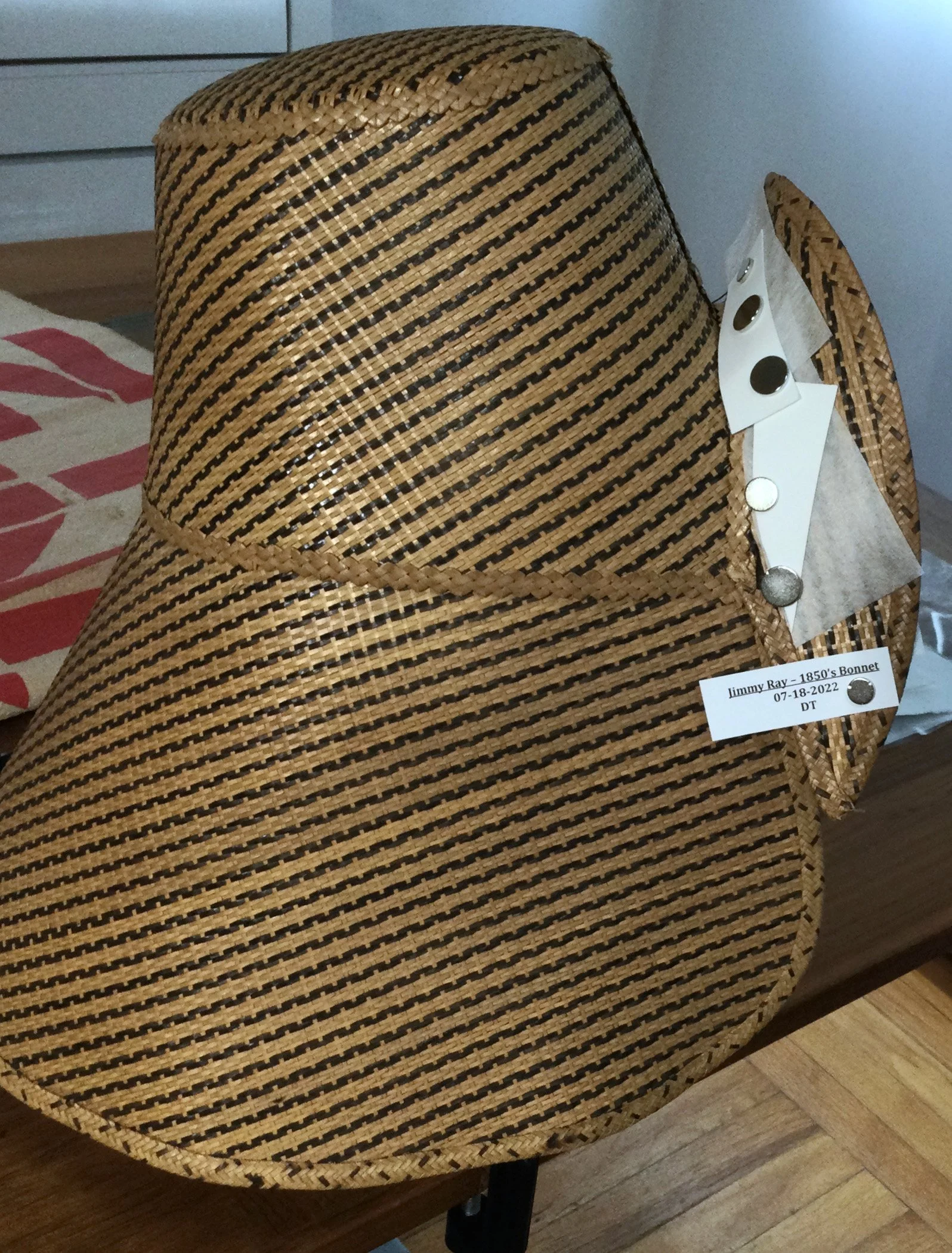
During Treatment
Life Magnets were used to keep a contact humidification packet in a three- dimensional format during treatment.
-
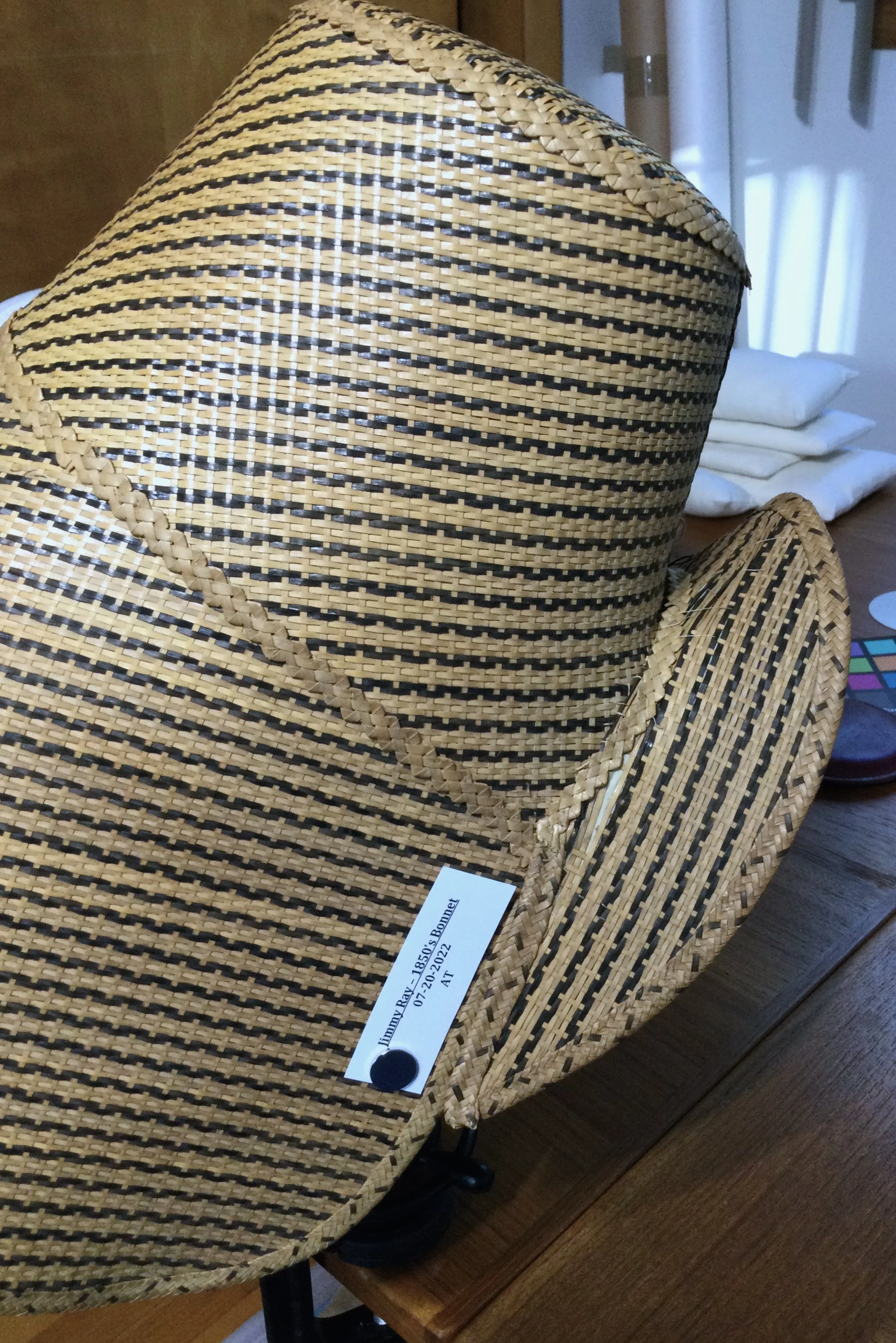
After Treatment
The successful final treatment included the use of a paper underlay attached at the reverse with wheat starch paste.
Traditional Swedish Costume
This traditional Swedish ensemble is a cherished family heirloom Because the present day owner understands the importance of proper care and storage, it will continue to be part of the family history and legacy.
The ensemble consists of a dress with two blouses, one apron, two pairs of stockings, one cap, and a scarf.

-
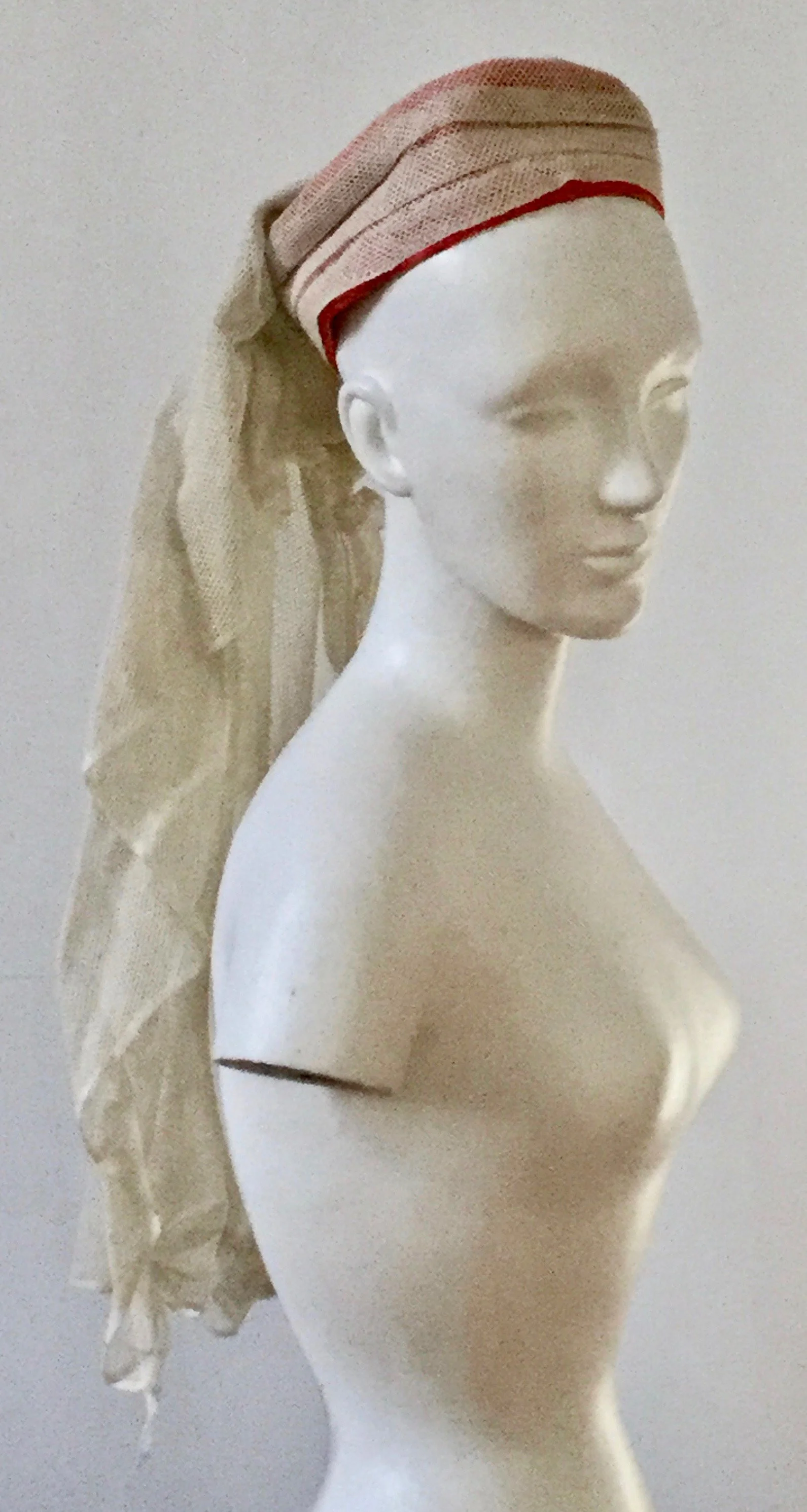
Before Treatment
This hat consists of three materials; a buckram base covered by both pink silk and cotton netting.
-
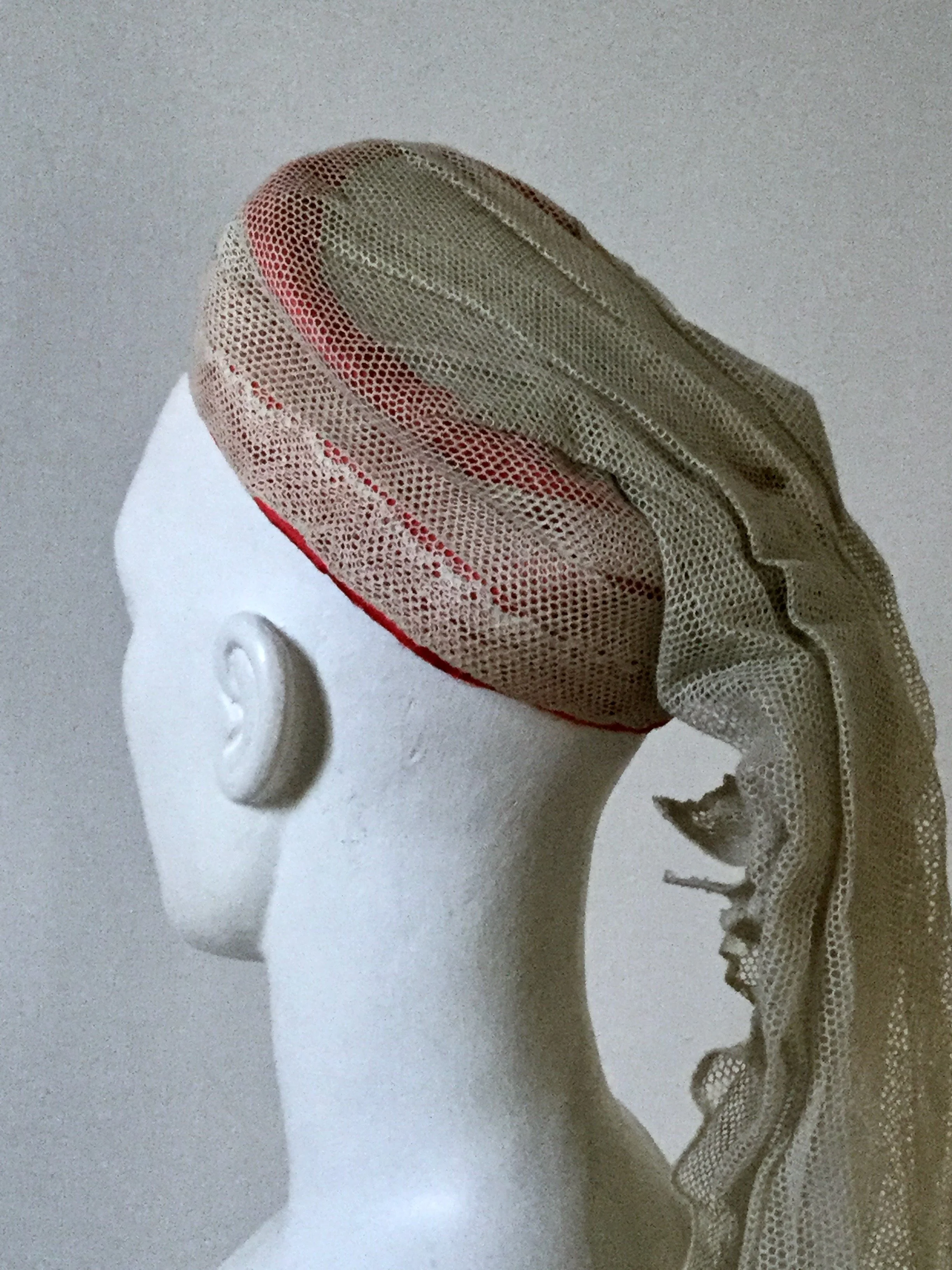
Before Treatment
The buckram base was misshapen with the pink fabric edge split and one accretion located at the side.
-
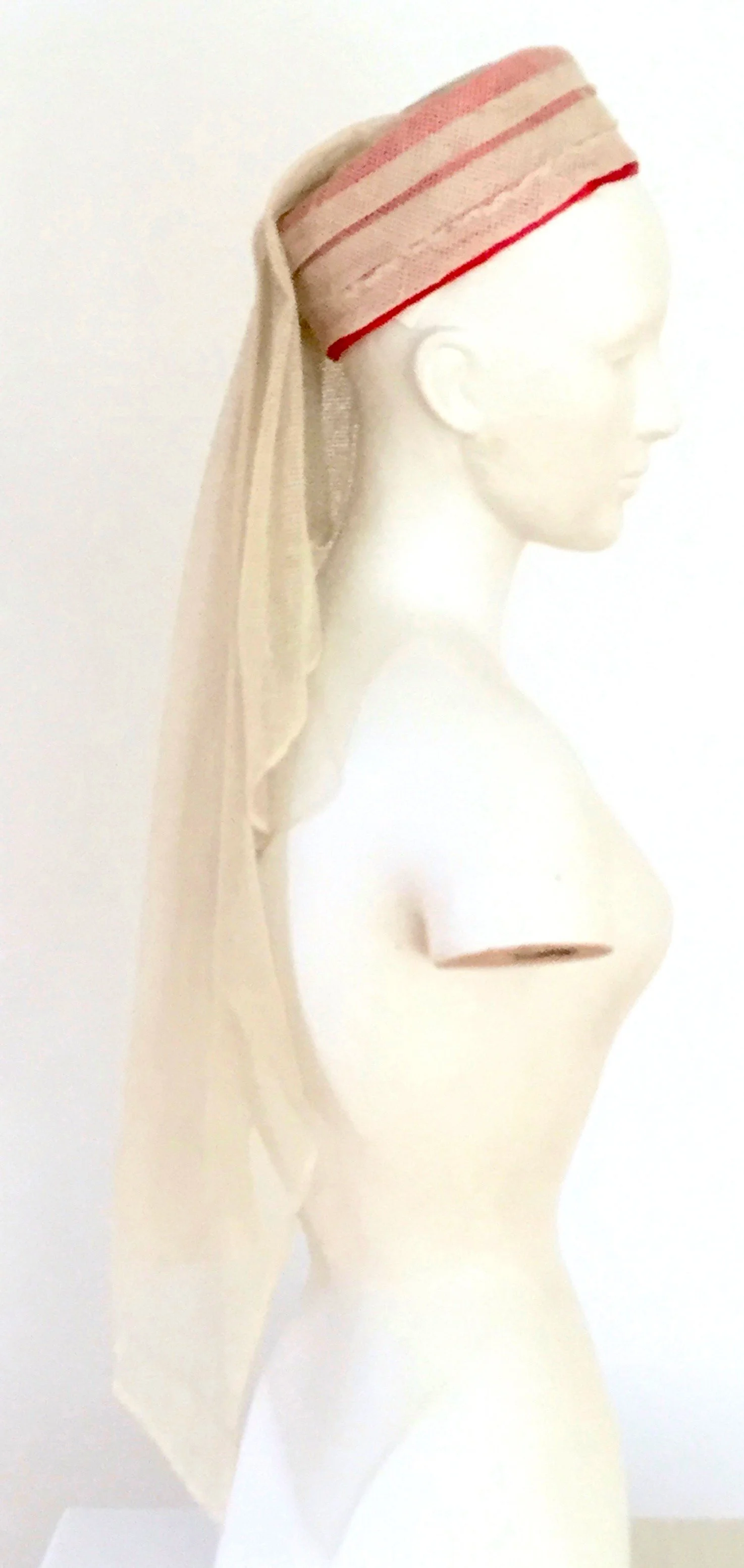
After Treatment
This treatment included stain removal, repair and realignment, and reshaping done with a combination of contact humidification and steam.
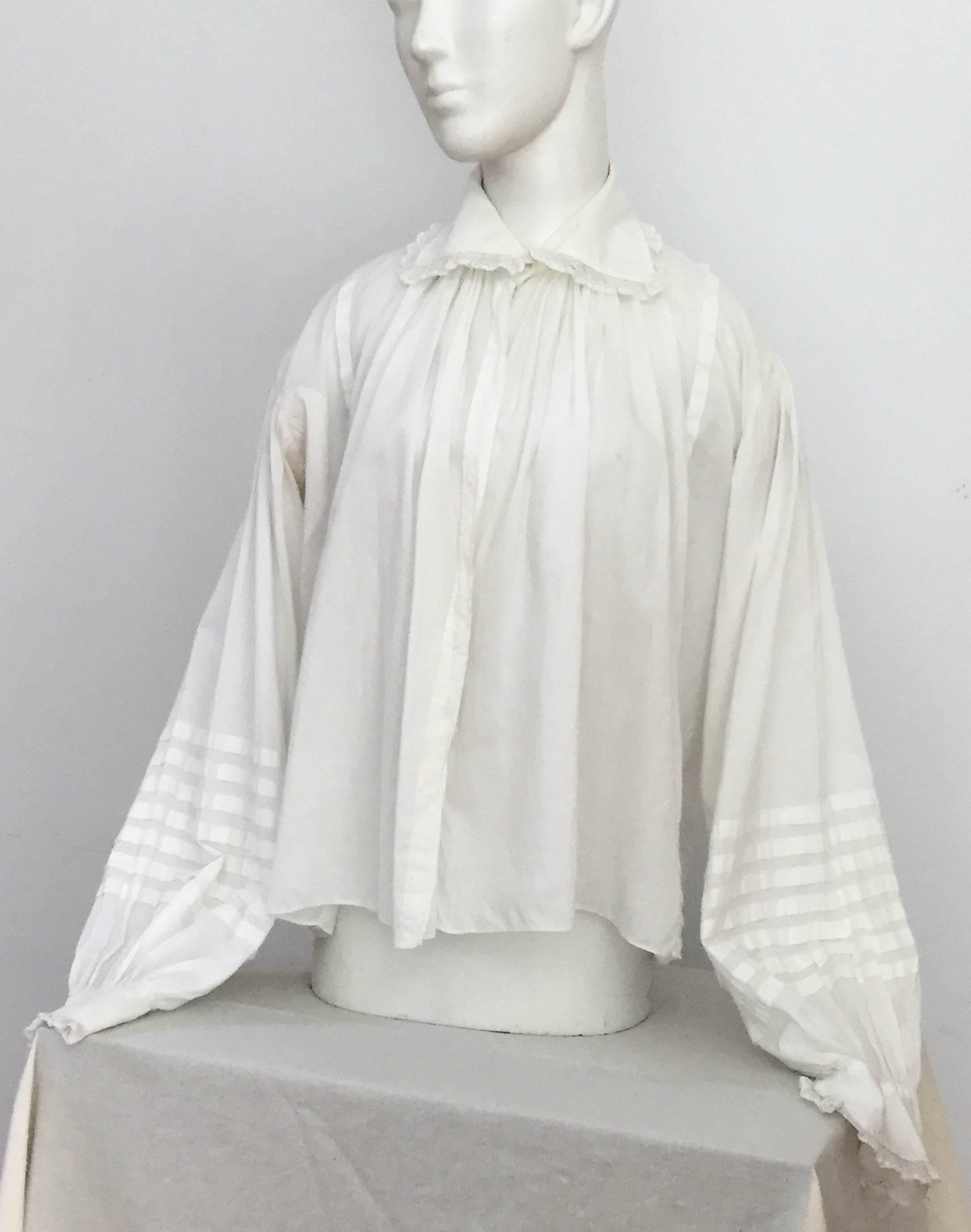
-
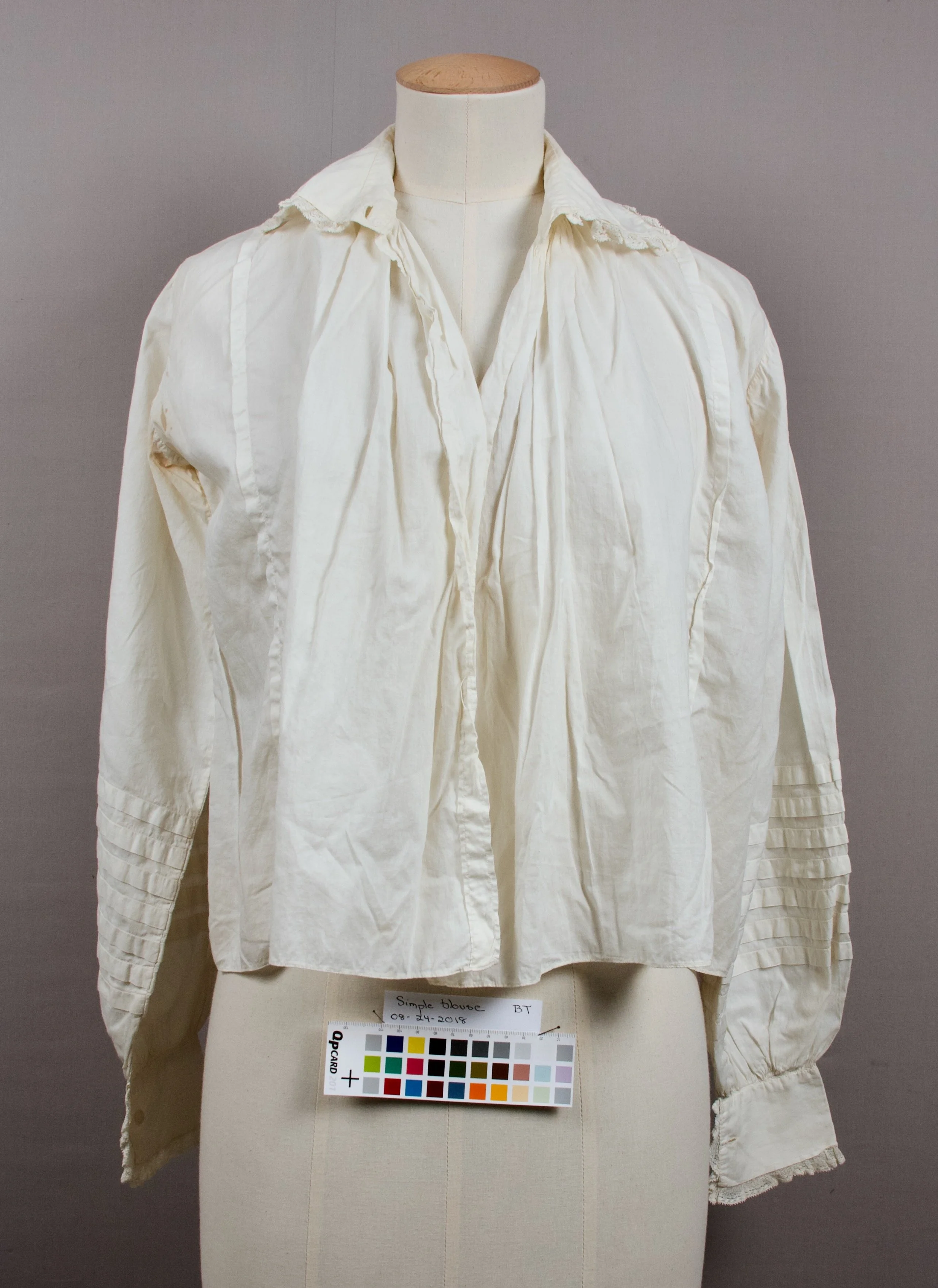
Before Treatment
Both blouses of the ensemble were wet cleaned.
-

After Treatment
The wet cleaning treatment removed acidic degradation products.
-
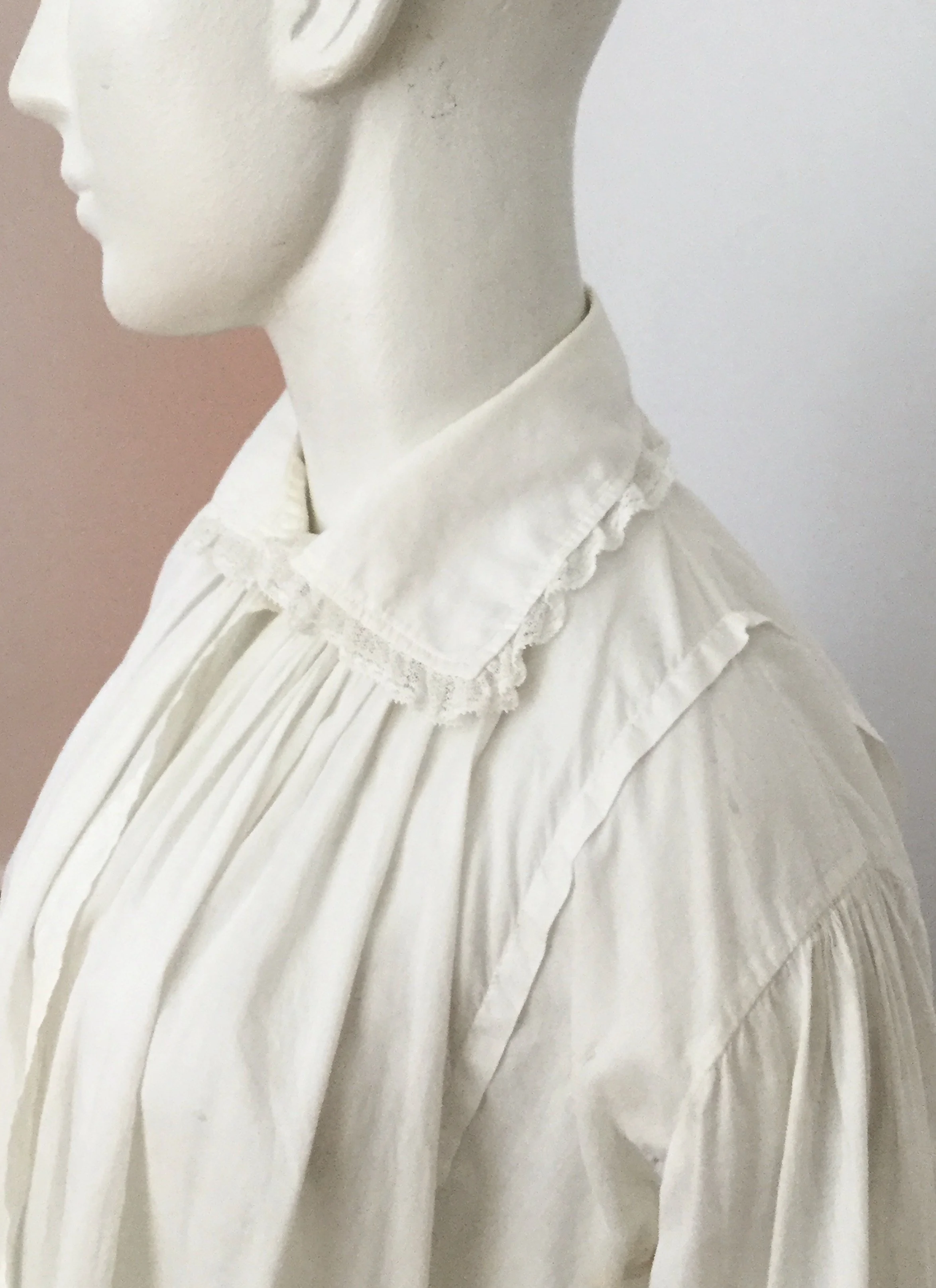
After Treatment Detail

-
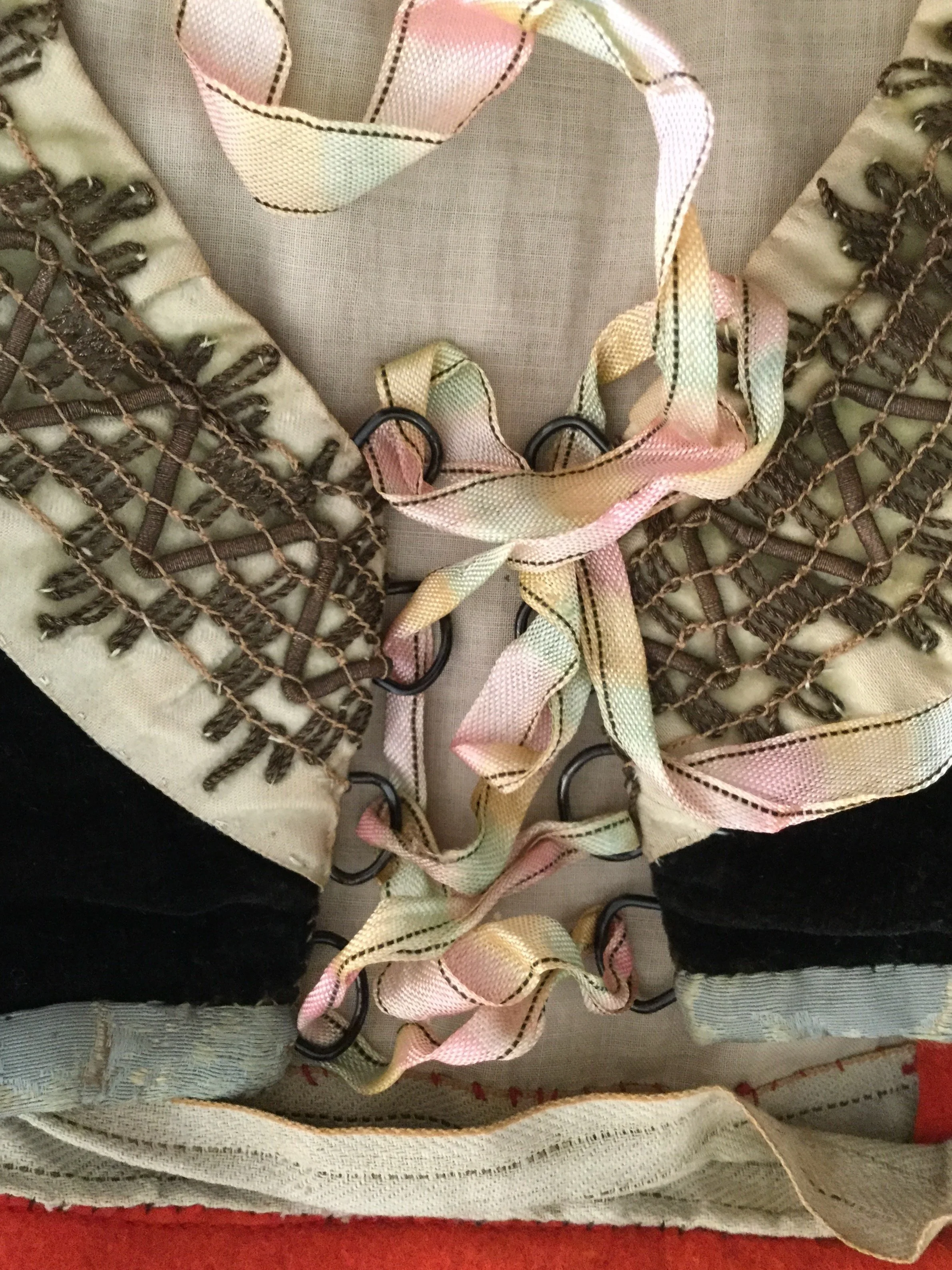
Front Dress Tie Before Treatment
-

During Treatment
-

After Treatment
Contact humidification removed creasing and realigned this silk tie.

